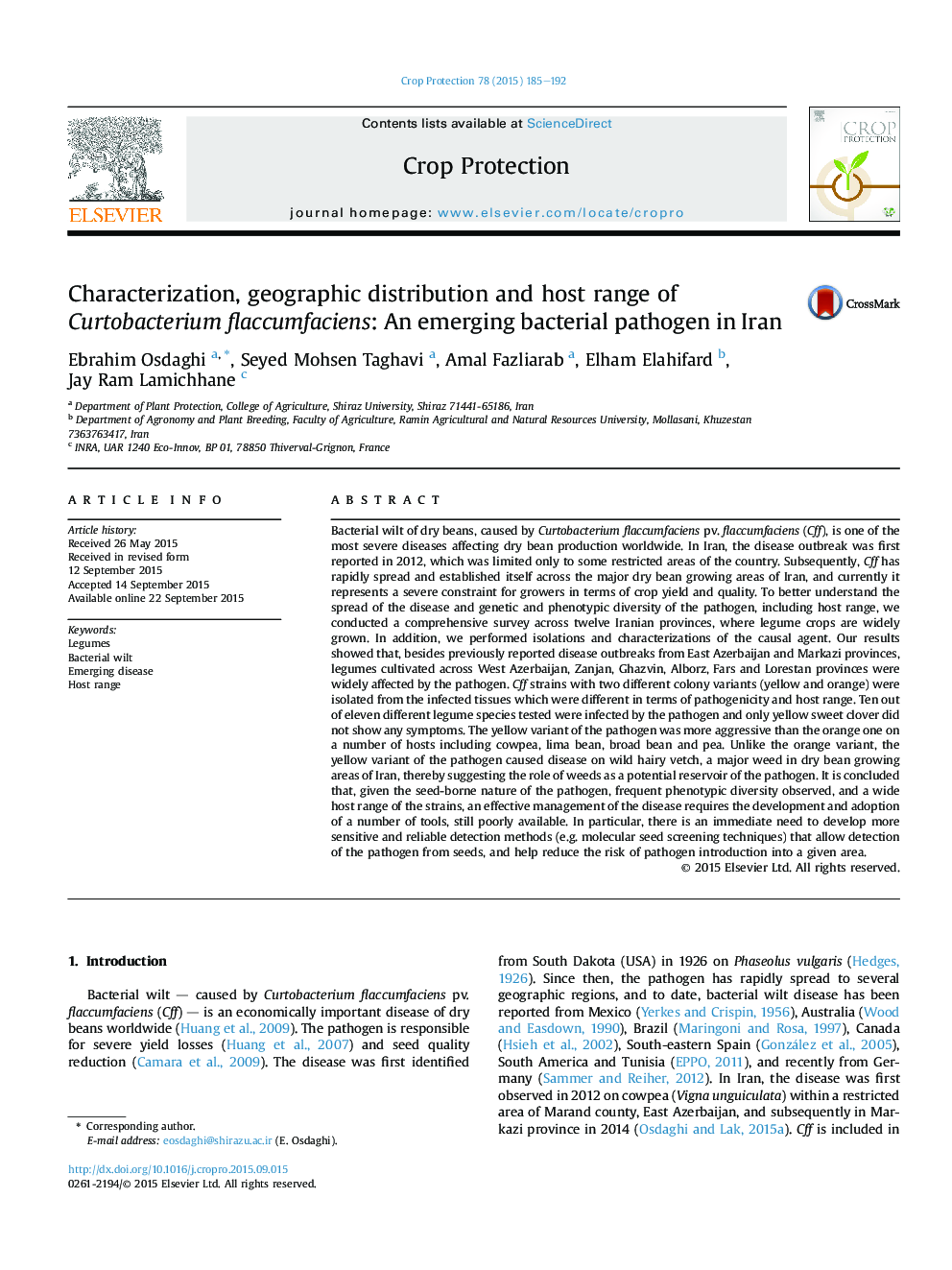| کد مقاله | کد نشریه | سال انتشار | مقاله انگلیسی | نسخه تمام متن |
|---|---|---|---|---|
| 4505686 | 1624309 | 2015 | 8 صفحه PDF | دانلود رایگان |

• Bacterial wilt of bean is being widespread throughout the eight provinces of Iran.
• No significant diversity was noted among the common bean, cowpea, and lima bean strains.
• Ten out of eleven different legume species tested were infected by the pathogen.
Bacterial wilt of dry beans, caused by Curtobacterium flaccumfaciens pv. flaccumfaciens (Cff), is one of the most severe diseases affecting dry bean production worldwide. In Iran, the disease outbreak was first reported in 2012, which was limited only to some restricted areas of the country. Subsequently, Cff has rapidly spread and established itself across the major dry bean growing areas of Iran, and currently it represents a severe constraint for growers in terms of crop yield and quality. To better understand the spread of the disease and genetic and phenotypic diversity of the pathogen, including host range, we conducted a comprehensive survey across twelve Iranian provinces, where legume crops are widely grown. In addition, we performed isolations and characterizations of the causal agent. Our results showed that, besides previously reported disease outbreaks from East Azerbaijan and Markazi provinces, legumes cultivated across West Azerbaijan, Zanjan, Ghazvin, Alborz, Fars and Lorestan provinces were widely affected by the pathogen. Cff strains with two different colony variants (yellow and orange) were isolated from the infected tissues which were different in terms of pathogenicity and host range. Ten out of eleven different legume species tested were infected by the pathogen and only yellow sweet clover did not show any symptoms. The yellow variant of the pathogen was more aggressive than the orange one on a number of hosts including cowpea, lima bean, broad bean and pea. Unlike the orange variant, the yellow variant of the pathogen caused disease on wild hairy vetch, a major weed in dry bean growing areas of Iran, thereby suggesting the role of weeds as a potential reservoir of the pathogen. It is concluded that, given the seed-borne nature of the pathogen, frequent phenotypic diversity observed, and a wide host range of the strains, an effective management of the disease requires the development and adoption of a number of tools, still poorly available. In particular, there is an immediate need to develop more sensitive and reliable detection methods (e.g. molecular seed screening techniques) that allow detection of the pathogen from seeds, and help reduce the risk of pathogen introduction into a given area.
Journal: Crop Protection - Volume 78, December 2015, Pages 185–192